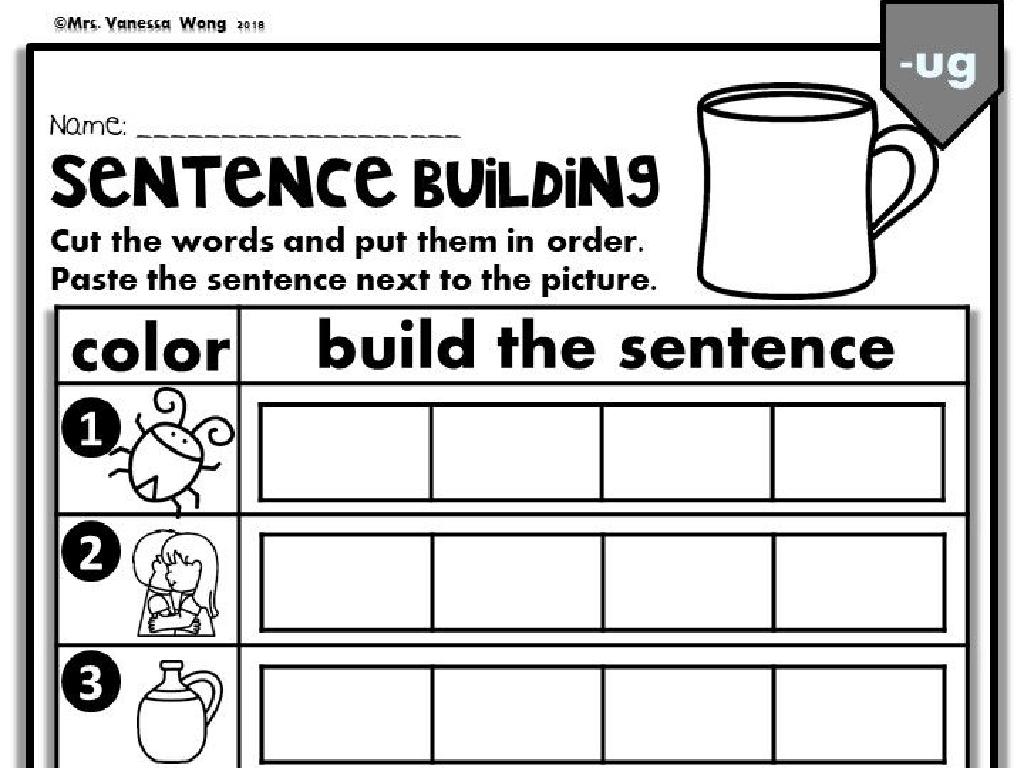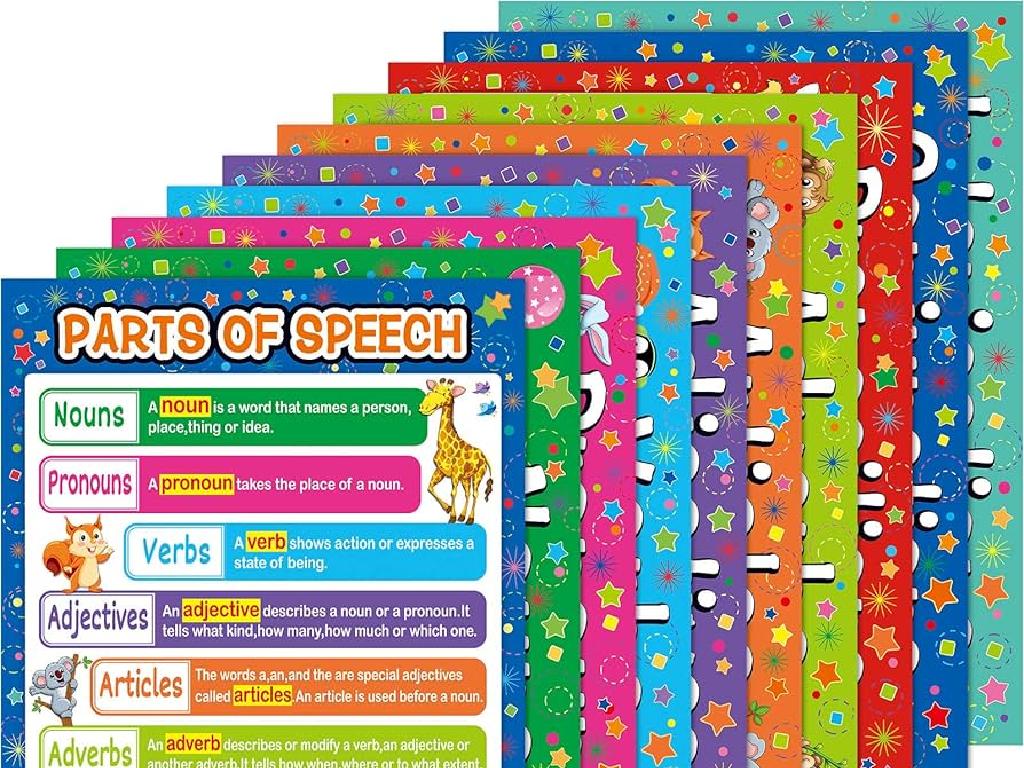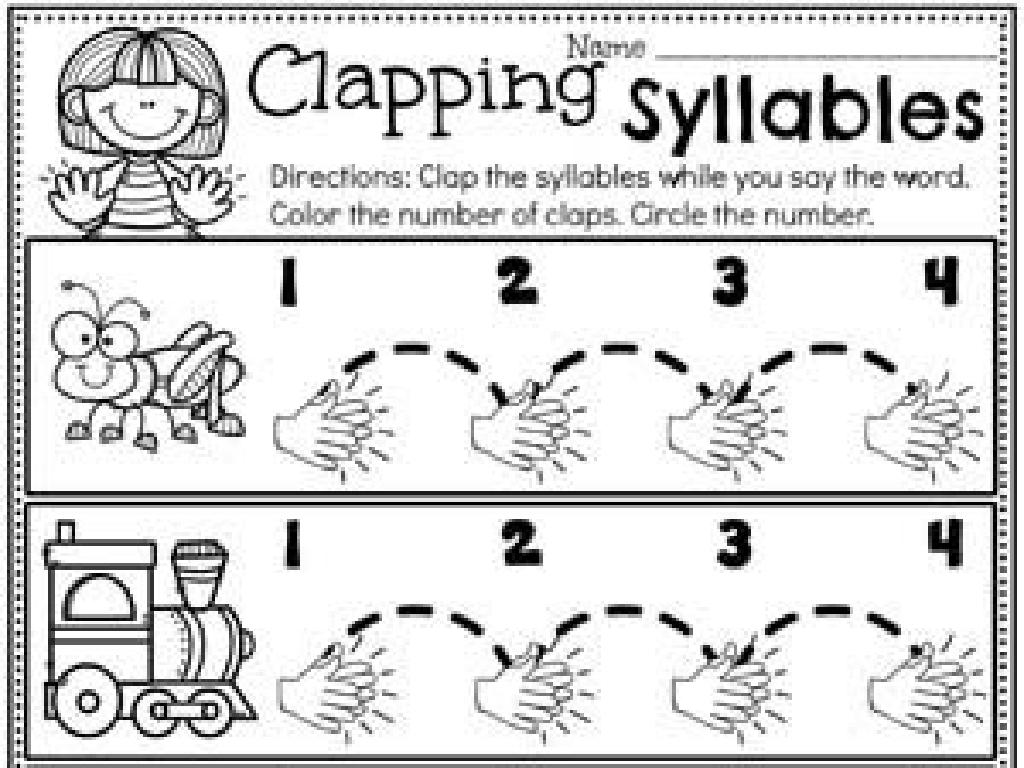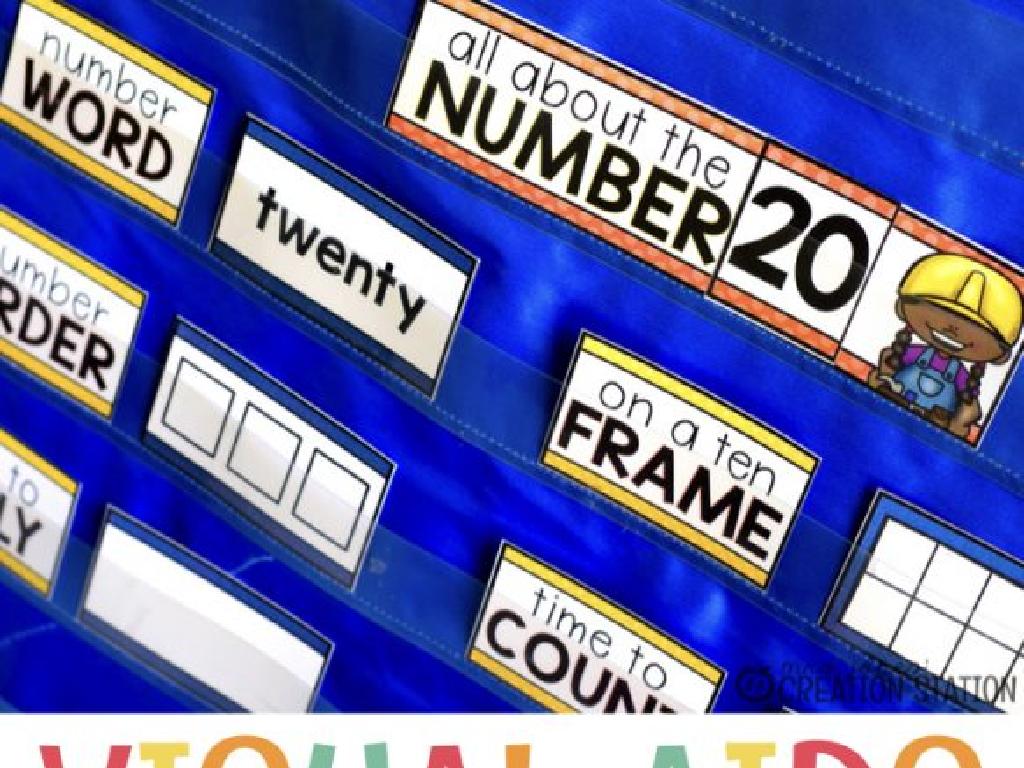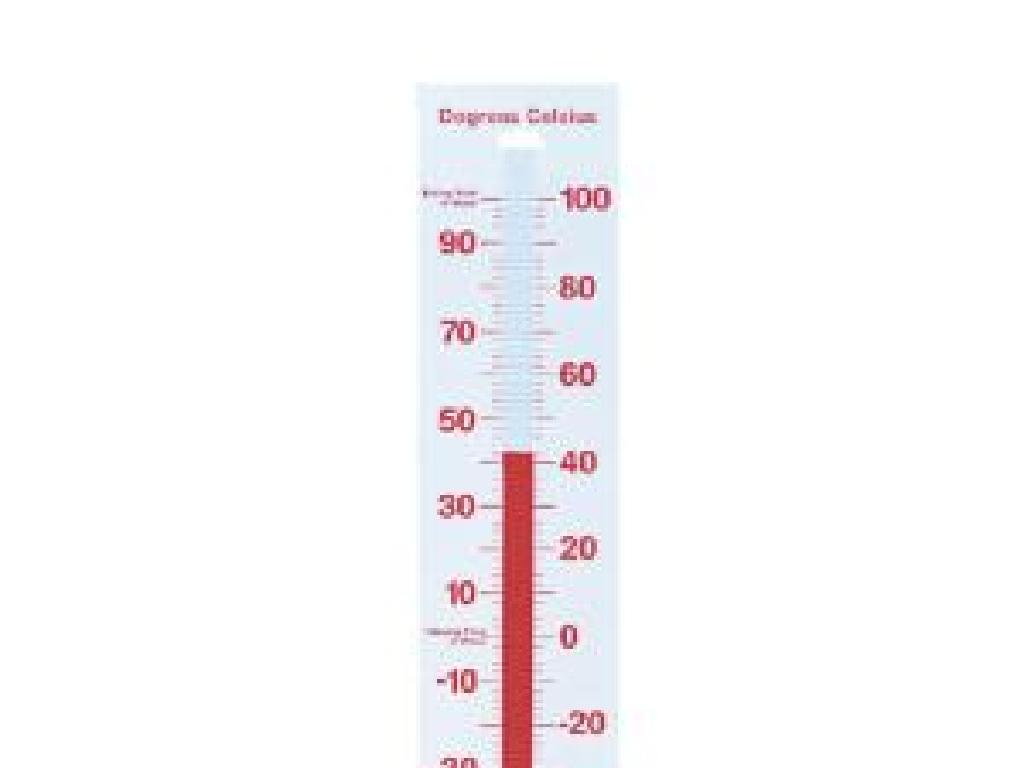Compare Fractions
Subject: Math
Grade: Fourth grade
Topic: Compare And Order Fractions
Please LOG IN to download the presentation. Access is available to registered users only.
View More Content
Today’s Adventure: Comparing Fractions!
– What are fractions?
– Fractions represent parts
– Imagine a pizza sliced into equal parts; each slice is a fraction of the whole pizza.
– Comparing fractions: why?
– Knowing which fraction is bigger helps in fair sharing and in understanding math problems.
– Methods to compare fractions
– Use visuals, find common denominators, or convert to decimals to compare.
|
Begin the lesson by ensuring students have a solid understanding of what fractions are and how they represent parts of a whole, using tangible examples like slices of pizza. Emphasize the importance of comparing fractions in everyday situations, such as dividing a treat fairly among friends or understanding portions in recipes. Introduce different methods for comparing fractions, such as drawing visual models, finding common denominators, or converting fractions to decimals. This foundational knowledge will be crucial for their success in more advanced math concepts. Provide plenty of examples and encourage students to practice with real-life scenarios where they might need to compare fractions.
Understanding Fractions
– A fraction represents part of a whole
– Like a slice of pizza is a part of a whole pizza
– Numerator and denominator explained
– Top number (numerator) shows how many parts we have. Bottom number (denominator) shows how many equal parts the whole is divided into.
– Examples: 1/2, 3/4, 2/3
– 1/2 is one out of two parts, 3/4 is three out of four parts, 2/3 is two out of three parts
|
Begin the lesson by explaining that a fraction is a way to represent a part of a whole, similar to how a slice of pizza is just a part of the entire pizza. Clarify the terms numerator and denominator, ensuring students understand that the numerator indicates the number of parts being considered, while the denominator shows the total number of equal parts that make up the whole. Provide clear examples of fractions to illustrate the concept, such as 1/2, 3/4, and 2/3, and relate them to everyday objects or situations that are familiar to fourth graders. This foundational understanding is crucial for comparing fractions later on.
Understanding Equivalent Fractions
– What are equivalent fractions?
– Fractions with different numerators and denominators but the same value.
– Examples of equivalent fractions
– 1/2 equals 2/4 or 4/8 because they all represent the same part of a whole.
– Finding equivalent fractions
– Multiply or divide the numerator and denominator by the same number.
– Practice with equivalent fractions
|
This slide introduces the concept of equivalent fractions, which are different fractions that represent the same value. Start by explaining that although the numbers on top (numerators) and bottom (denominators) may be different, the fractions can still be equal if they represent the same part of a whole. Use visual aids like pie charts or fraction bars to show how 1/2, 2/4, and 4/8 cover the same amount of space. Teach students how to find equivalent fractions by multiplying or dividing both the numerator and denominator by the same number. Provide practice problems where students can apply this method to find equivalent fractions on their own.
Comparing Fractions with the Same Denominator
– Fractions with same denominator
– Numerator determines size
– The top number of a fraction is the numerator
– Larger numerator, larger fraction
– Example: 3/8 vs 5/8
– 5/8 is larger than 3/8 because 5 is greater than 3
|
When comparing fractions with the same denominator, the key is to look at the numerators. The numerator represents how many parts of the whole we have. If two fractions have the same denominator, the one with the larger numerator is the larger fraction because it has more parts of the whole. For example, with 3/8 and 5/8, both fractions are parts of the same sized whole, but 5/8 has more parts, making it larger. This concept is fundamental and will help students understand how to compare fractions before moving on to comparing fractions with different denominators.
Comparing Fractions with Different Denominators
– Find a common denominator
– Look for the smallest number that both denominators can divide into.
– Make denominators the same
– Create equivalent fractions that have the same denominator.
– Example: Compare 1/2 and 2/3
– 1/2 becomes 3/6 and 2/3 becomes 4/6, so 2/3 is larger.
– Practice with different fractions
|
When comparing fractions with different denominators, it’s essential to find a common denominator so that the fractions are equivalent and can be compared easily. Teach students how to find the least common denominator and convert fractions into equivalent forms with this denominator. Use visual aids like fraction bars if possible to illustrate the concept. After explaining with the example of 1/2 and 2/3, provide additional pairs of fractions for students to practice. This will help solidify their understanding of comparing fractions with different denominators.
Using Benchmarks to Compare Fractions
– Understand benchmarks in fractions
– Benchmarks help us judge the size of other fractions
– Common benchmarks: 0, 1/2, 1
– 0, 1/2, and 1 are fractions we know well
– Compare fractions to benchmarks
– Is 3/4 more or less than 1/2? It’s more!
– Decide: less than, equal, or greater
– Practice by placing fractions relative to 0, 1/2, and 1
|
Benchmarks are reference points that students can use to easily compare fractions. Introduce the concept of benchmarks by explaining that they are familiar numbers we use to estimate where other numbers fit in relation to them. Use 0, 1/2, and 1 as the main examples, as these are fractions that fourth graders are usually comfortable with. Show how to compare other fractions to these benchmarks by deciding if they are less than, equal to, or greater than the benchmark. For example, if a fraction is more than 0 but less than 1/2, it’s closer to 0. Encourage students to practice with different fractions and to explain their reasoning. This will help them develop a stronger number sense and improve their ability to compare fractions.
Comparing Fractions on a Number Line
– Place fractions on a number line
– Visualize which fractions are larger or smaller
– Fractions to the right are greater
– Remember: right is greater, left is smaller
– Activity: Plot fractions on a line
– Use the number line to compare fractions like 1/4, 1/2, and 3/4
|
This slide introduces the concept of comparing fractions using a number line, which is a visual tool that helps students understand the size of different fractions relative to each other. The activity involves plotting given fractions on a number line to determine which are greater or smaller. For the activity, provide students with a number line and a set of fraction cards. Have them place the fractions in the correct order on the number line. Possible variations of the activity could include using different sets of fractions, comparing fractions with the same numerator or denominator, or even having students create their own number lines. This hands-on activity will reinforce the concept that as you move to the right on the number line, the fractions increase in value.
Let’s Practice Comparing Fractions!
– Compare sets of fractions
– Determine the greater fraction
– Example: 3/5 vs 4/6
– Is 3/5 larger or smaller than 4/6? Think about the size of pieces.
– Use comparison methods learned
– Remember to use cross-multiplication or common denominators.
|
This slide is designed to engage students in a practical exercise to compare fractions using the methods they’ve learned in class. Encourage the students to apply comparison techniques such as finding common denominators or cross-multiplication to determine which fraction is greater. For the example provided, guide them step by step on how to compare 3/5 and 4/6, and ensure they understand why one fraction is greater than the other. In the classroom, you can expand this activity by providing different sets of fractions for comparison and allowing students to work in pairs or groups to foster collaborative learning. Prepare to discuss different strategies and answer any questions that may arise during the practice.
Class Activity: Fraction Face-Off!
– Pair up and draw fraction cards
– Compare fractions using strategies
– Use benchmarks, number lines, or cross-multiplication
– Decide which fraction is greater
– Discuss your findings with the class
– Explain your reasoning when sharing
|
This interactive game encourages students to apply their knowledge of comparing fractions in a fun, collaborative way. Students will work in pairs to draw cards with fractions on them and use strategies such as benchmarking (comparing to 0, 1/2, or 1), visualizing with number lines, or cross-multiplication to determine which fraction is greater. After comparing, they will decide on the greater fraction and then share their findings with the class, explaining the strategy they used. This activity not only reinforces their understanding of fractions but also enhances their communication and reasoning skills. Possible variations of the activity could include using different sets of fraction cards, timed rounds, or a tournament-style progression where pairs face off against each other.
Wrapping Up: Comparing Fractions
– Congratulations on learning comparison!
– Review today’s key fraction concepts
– Remember how to find common denominators and compare numerators
– Complete the fraction worksheet
– Practice makes perfect! Try the problems on the worksheet
– Bring any questions to the next class
– We’ll discuss any difficulties in our next session
|
Well done to the class for tackling the concept of comparing fractions! It’s important to reinforce the day’s learning by reviewing the methods to compare fractions, such as finding common denominators and comparing numerators. The homework worksheet is designed to provide additional practice to solidify these concepts. Encourage the students to attempt all the problems and remind them that it’s okay to have questions we will address any challenges they face in the next class. This will help them feel prepared and confident in their understanding of comparing fractions.

